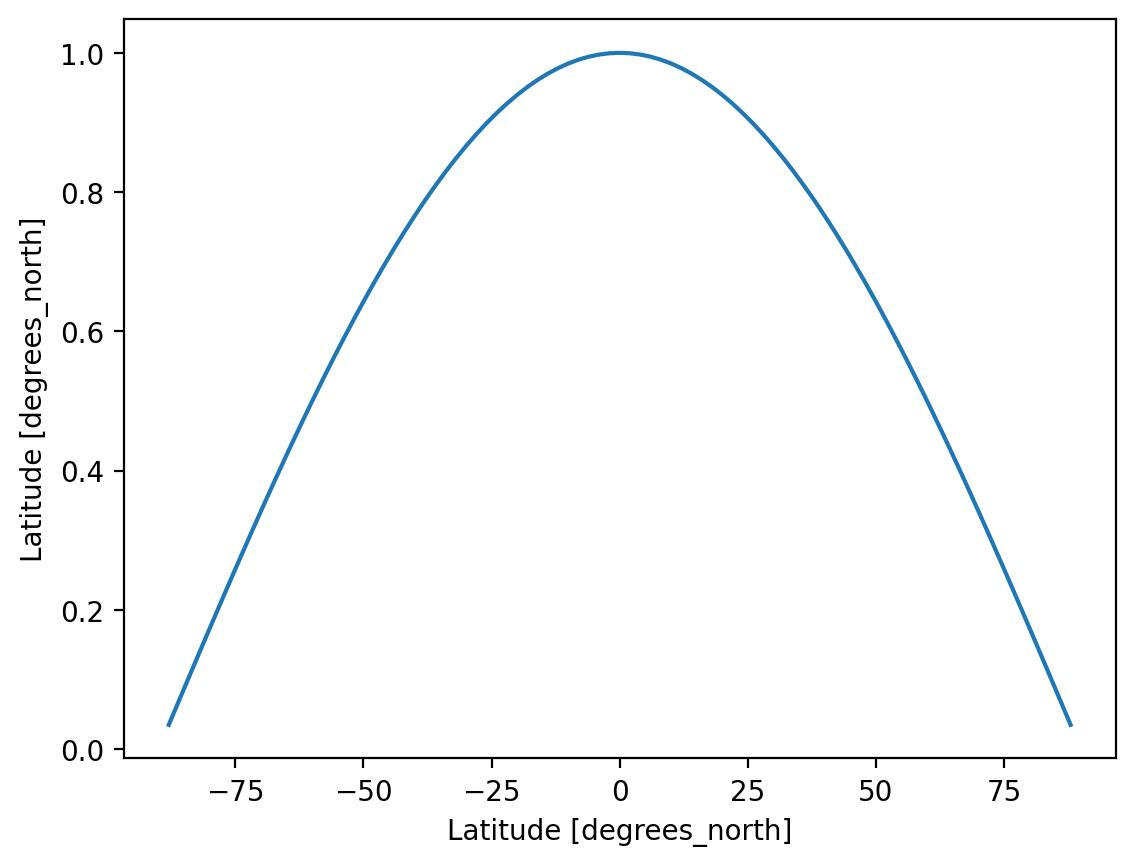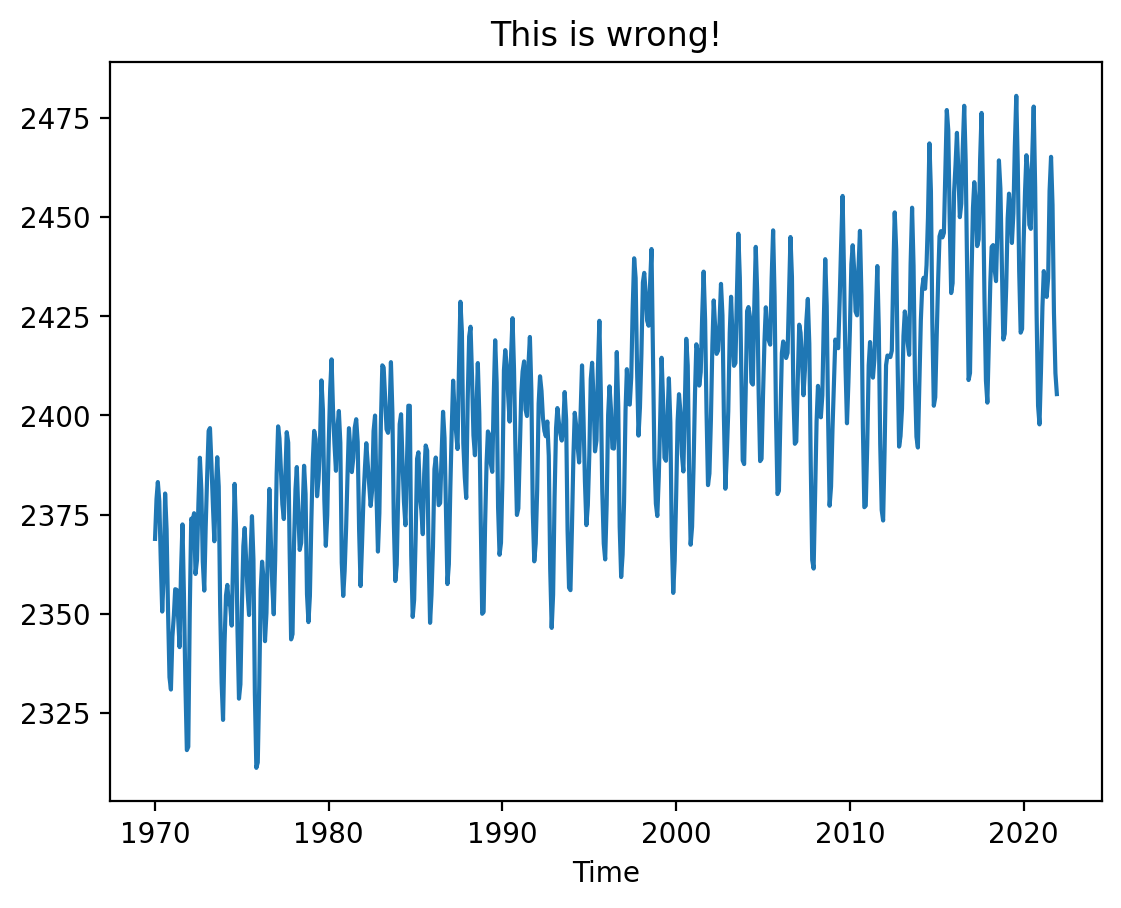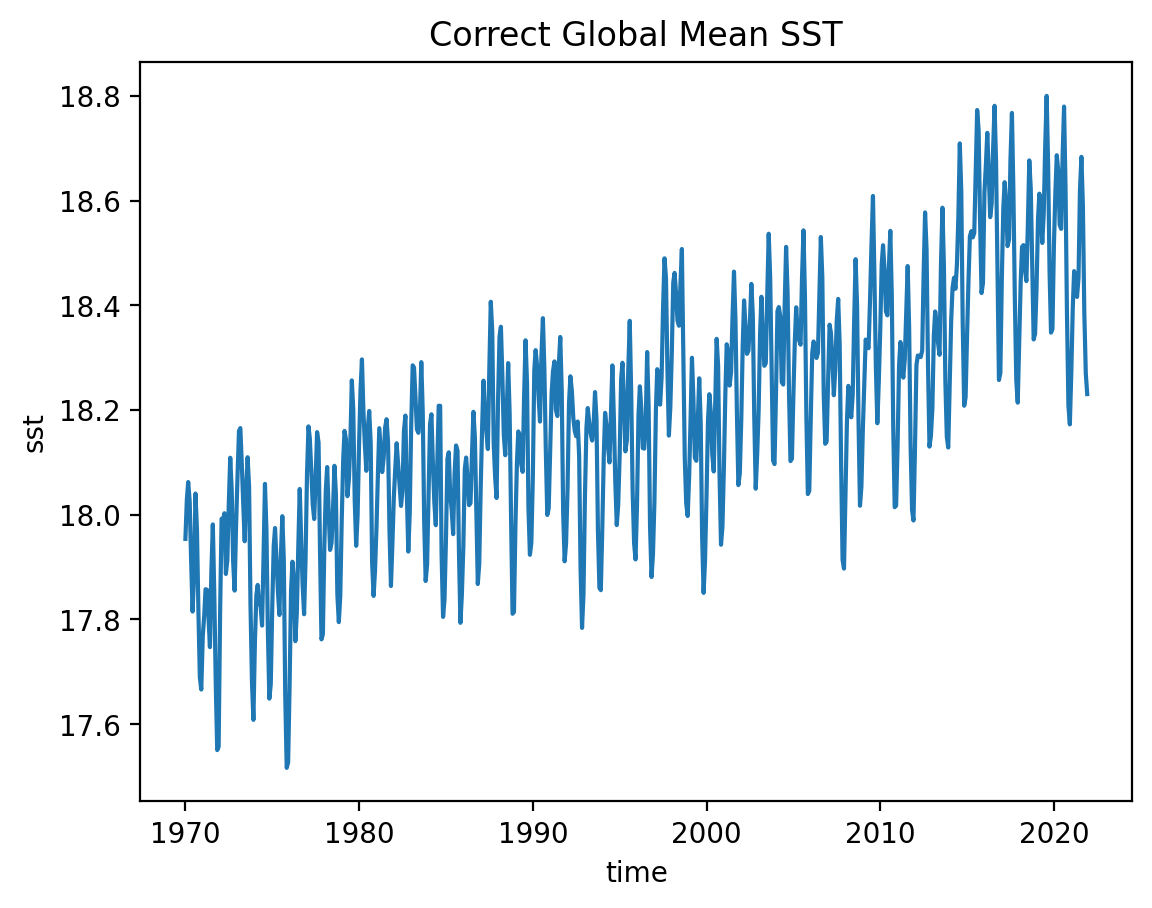Weighted Reductions#
Xarray supports weighted reductions.
For demonstration, we will create a “weights” array proportional to cosine of latitude. Modulo a normalization, this is the correct area-weighting factor for data on a regular lat-lon grid.
import numpy as np
import xarray as xr
import matplotlib.pyplot as plt
%config InlineBackend.figure_format='retina'
ds = xr.tutorial.load_dataset("ersstv5")
ds
<xarray.Dataset> Size: 40MB
Dimensions: (lat: 89, lon: 180, time: 624, nbnds: 2)
Coordinates:
* lat (lat) float32 356B 88.0 86.0 84.0 82.0 ... -84.0 -86.0 -88.0
* lon (lon) float32 720B 0.0 2.0 4.0 6.0 ... 352.0 354.0 356.0 358.0
* time (time) datetime64[ns] 5kB 1970-01-01 1970-02-01 ... 2021-12-01
Dimensions without coordinates: nbnds
Data variables:
time_bnds (time, nbnds) float64 10kB 9.969e+36 9.969e+36 ... 9.969e+36
sst (time, lat, lon) float32 40MB -1.8 -1.8 -1.8 -1.8 ... nan nan nan
Attributes: (12/37)
climatology: Climatology is based on 1971-2000 SST, Xue, Y....
description: In situ data: ICOADS2.5 before 2007 and NCEP i...
keywords_vocabulary: NASA Global Change Master Directory (GCMD) Sci...
keywords: Earth Science > Oceans > Ocean Temperature > S...
instrument: Conventional thermometers
source_comment: SSTs were observed by conventional thermometer...
... ...
creator_url_original: https://www.ncei.noaa.gov
license: No constraints on data access or use
comment: SSTs were observed by conventional thermometer...
summary: ERSST.v5 is developed based on v4 after revisi...
dataset_title: NOAA Extended Reconstructed SST V5
data_modified: 2022-06-07weights = np.cos(np.deg2rad(ds.lat))
display(weights.dims)
weights.plot()
Manual weighting#
Thanks to the automatic broadcasting and alignment discussed earlier, if we multiply this by SST, it “just works,” and the arrays are broadcasted properly:
(ds.sst * weights).dims
('time', 'lat', 'lon')
We could imagine computing the weighted spatial mean of SST manually.
sst_mean = (ds.sst * weights).sum(dim=("lon", "lat")) / weights.sum(dim="lat")
sst_mean.plot()
plt.title("This is wrong!")
That would be wrong, however, because the denominator (weights.sum(dim='lat'))
needs to be expanded to include the lon dimension and modified to account for
the missing values (land points).
The weighted method#
In general, weighted reductions on multidimensional arrays are complicated. To make it a bit easier, Xarray provides a mechanism for weighted reductions.
It does this by creating a special intermediate DataArrayWeighted object, to
which different reduction operations can applied.
sst_weighted = ds.sst.weighted(weights)
sst_weighted
DataArrayWeighted with weights along dimensions: lat
sst_weighted.mean(dim=("lon", "lat")).plot()
plt.title("Correct Global Mean SST");
A handful of reductions have been implemented: mean, sum, std, var.




